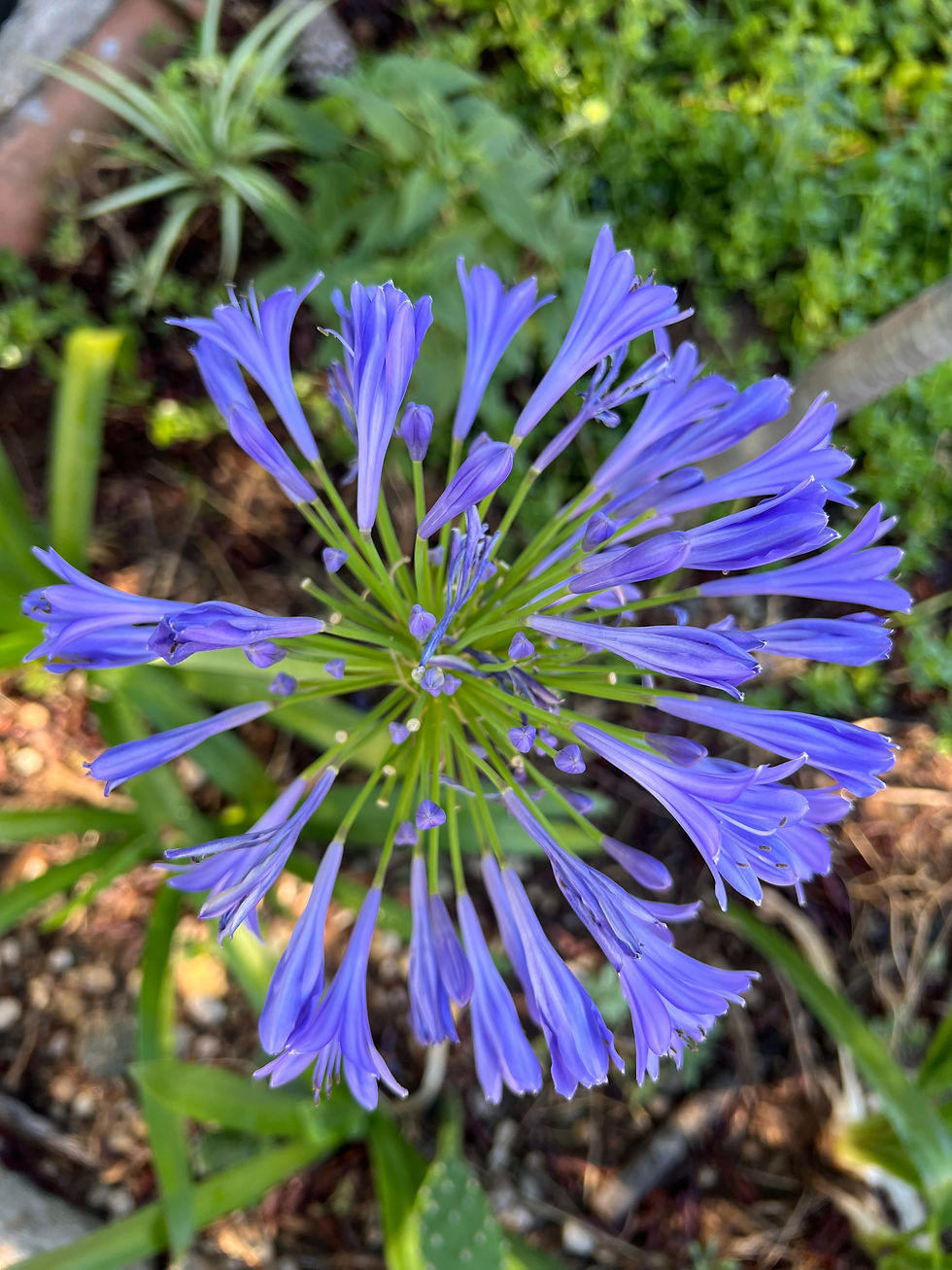Citrus sinensis 'Valencia Late' (Orange)
- Herman Kraut

- Jul 23
- 4 min read
Updated: Jul 31
Citrus sinensis 'Valencia Late'
Common Name: Valencia Orange
Scientific Name: Citrus sinensis 'Valencia Late'
Plant Family: Rutaceae
Lifecycle: Perennial
The Citrus sinensis 'Valencia Late' is a classic late-season orange cultivar, prized for its juicy, sweet fruit and long harvest window. It thrives in Mediterranean climates and is well-suited for Zone 8a growers looking for a heat-tolerant orange that can extend the citrus season well into summer. Its bright fruit and fragrant blossoms are beloved by bees and homesteaders alike.
For in-depth guides and curated tools, be sure to check out our Recommended Books & Resources below.
Plant Profile
Characteristic | Information |
Climate Suitability | USDA Zones 8–11; Köppen Csa (Mediterranean) |
Sun / Shade Needs | Full sun (6–8 hours minimum) |
Watering Needs | Moderate; deep watering in summer, less in winter |
Soil Preferences | Well-drained, sandy loam; slightly acidic to neutral |
Spacing & Height | 4–6 m spacing; grows 3–5 m tall |
Propagation Method(s) | Grafting onto rootstock; semi-hardwood cuttings |
Planting Timeline | Best in early spring or autumn in mild climates |
Companion Plants | Lavender, comfrey, lemon balm, nasturtiums |
Edible / Medicinal / Ecological Uses | Fresh juice, zest, preserves; attracts pollinators |
Pest / Disease Considerations | Susceptible to scale, aphids, citrus leafminer |
Pruning / Harvest Notes | Prune after harvest; fruit ripens late spring to summer |
Quick Plant Reference
• Care Level: Moderate
• Optimal Sunlight: Full sun
• Water Needs: Moderate; drought-tolerant once established
• Mature Size: 3–5 m (10–16 ft) tall and wide
• Soil Type: Well-drained, sandy loam
• Humidity: Medium
• Toxicity: Non-toxic to humans; peel may irritate pets in large amounts
• Beneficial Pollinators: Bees, hoverflies
• Health Benefits: Rich in Vitamin C, antioxidants, and flavonoids
• Chilling Hours: 100–300 hours (7 °C or below)
• Pollination Requirements: Self-pollinating but improved with pollinators
Our Citrus sinensis 'Valencia Late' Application @ Tough Kraut
We planted our Citrus sinensis 'Valencia Late' on November 15, 2022, along the same sun-baked fence line as our 'Navelina'. This exposed spot pushes trees to toughen up early. While we’ve yet to see fruit, we’re intentionally prioritizing root development by removing any early blossoms. It’s all part of our long game for strong, resilient citrus trees in a Zone 8a permaculture system.
Step-by-Step Growing Guide
1. Choose the Right Site
Select a location with full sun and good airflow. Avoid frost pockets and areas with poor drainage.
2. Prepare the Soil
Dig a wide, shallow hole and amend with compost and sand if your soil is heavy. Avoid high-nitrogen fertilizers at planting.
3. Plant the Tree
Set the graft union above the soil line. Water deeply after planting and mulch to retain moisture and suppress weeds.
4. Water Consistently
Water regularly during the first 2–3 years, especially during heatwaves. Reduce watering in fall and winter to prevent root rot.
5. Ensure Proper Pollination
While self-fertile, pollination improves with bee activity. Avoid pesticide use during bloom.
6. Prune Annually
Prune in late winter or after harvest to maintain structure and air circulation. Remove suckers and dead wood.
7. Manage Pests and Diseases
Watch for citrus leafminers and scale. Use neem oil or beneficial insects like ladybugs when needed.
8. Harvest and Store
Expect ripening from late spring into summer. Harvest by hand once the fruit turns fully orange and slightly soft to the touch.
9. Note
Young citrus often flower early, but it’s best to remove early fruit to direct energy into strong root systems. In Zones 8a and below, winter protection was not necessary during cold snaps.
Kraut Crew Insight
Our 'Valencia Late' has been slow and steady—no flowers yet, but plenty of healthy green growth. Its position near our eastern fence line really puts it to the test during summer heat. We’re letting nature do the pacing while we mulch deep and stay patient.
Photos
Herman’s Tough Kraut Field Notes: Solving Valencia Orange Cultivation Challenges
If you're troubleshooting your Citrus sinensis 'Valencia Late', you’re not alone. FAQ-style issues with young citrus trees often revolve around fruit drop, yellowing leaves, and cold sensitivity—especially for those growing in Zone 8a. Below are some field-tested solutions based on real homestead experience.
Q: Why is my Valencia Orange not flowering or fruiting?
A: Trees under 3 years old often focus on root development. Ensure it's getting full sun and balanced nutrients, and resist the urge to over-fertilize with nitrogen-rich feed.
Q: Should I remove early fruit if it starts forming?
A: Yes! In the first 2–3 years, removing young fruit helps the tree channel energy into root growth and structural development.
Q: How do I protect it during frost events?
A: Use frost cloth or build a small greenhouse tent. Even a bucket or heavy blanket overnight can help prevent bud and branch damage in young trees.
Q: Why are my leaves curling or yellowing?
A: Could be overwatering, under-watering, or nutrient imbalance. Check soil moisture, drainage, and consider a citrus-specific fertilizer.
Q: Can I grow this tree in a container in Zone 8a?
A: Yes, but choose a large pot (at least 50L), and bring the tree into shelter during winter. Container citrus need extra watering and feeding.
Recommended Books & Resources
Books
Citrus: Complete Guide to Selecting and Growing More Than 100 Varieties for California, Arizona, Texas, the Gulf Coast and Florida by Lance Walheim
Tailored to region-specific cultivation, this guide helps Zone 8a growers choose and manage top-performing citrus varieties.
The Citrus Industry, Volume II by Herbert John Webber & Leon Dexter
A must-read if you're deep into citrus cultivation. Covers everything from genetics to post-harvest handling; often called the “bible” of citrus cultivation.
Growing Citrus: The Essential Gardener's Guide by Martin Page
A practical guide with organic practices, propagation methods, and variety-specific tips.
Successfully Grow and Garden Citrus Fruit Trees Using Pots and Containers by Madison Pierce
Actionable container-growing methods ideal for extending seasons in cooler Zone 8a locations.
Resources
Neem Bliss 100% Neem Oil Concentrate
A widely used natural pest repellent for aphids and mites. Works well for most growers, though it can solidify over time and smells like a punch to the nose. Great plant protector if you don’t mind the funk.
Tough Kraut Resources — Tools, organic sprays, and grafting essentials we’ve actually used to support our homestead fruit trees.
Entry last updated: 2025-07-31
This post is part of the Tough Kraut Plant Library, documenting what really grows on our off-grid homestead in Central Portugal.











Comments